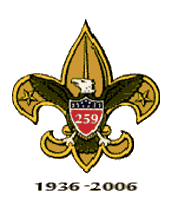
Lieutenant Colonel Aquilla James Dyess (January 11, 1909 – February 2, 1944) was a United States Marine Corps officer who was posthumously awarded the Medal of Honor for "conspicuous gallantry and intrepidity at the risk of his life" at the head of his troops during the Battle of Kwajalein, on Namur Island, Kwajalein Atoll, Marshall Islands on 2 February 1944
Biography
Aquilla James Dyess was born on 11 January 1909 in Andersonville, Georgia. As a youth, he attained the rank of Eagle Scout, highest in the Boy Scouts. Dyess is one of only four known Eagle Scouts who also received the Medal of Honor. The others are Robert Edward Femoyer, Eugene B. Fluckey, and Mitchell Paige.
Dyess graduated from Clemson College, Clemson, South Carolina, in 1932 with a Bachelor of Science degree in architecture. At Clemson, he served as a cadet major in the Reserve Officers' Training Corps, and was appointed a second lieutenant in the Army Infantry Reserve in 1931.
In civilian life, he was a general contractor. He also served as assistant director of a summer camp for boys.
Dyess was appointed a first lieutenant in the Marine Corps Reserve in November 1936. In 1937, 1stLt Dyess was awarded the Bronze Star as a shooting member of the Marine Corps Rifle Team which won the Hilton trophy in the National matches, and was given the same award in 1938 as an alternate member of the team that captured the Rattlesnake trophy in the matches.
Lieutenant Colonel Dyess was killed on 2 February 1944 by a burst of enemy machine gun fire while standing on the parapet of an anti-tank trench directing a group of infantry in a flanking attack against the last Japanese position in the northern part of Namur Island. In this final assault, LtCol Dyess posted himself between the opposing lines and, exposed to fire from heavy automatic weapons, led his troops in the advance. Wherever the attack was slowed by heavier enemy fire, he quickly appeared and placed himself at the head of his men and inspired them to push forward.
Lieutenant Colonel Dyess was initially buried in the 4th Marine Division Cemetery on Roi-Namur Island, Kwajalein Atoll, Marshall Islands. Later, in 1948, he was re-interred in Westover Memorial Park Cemetery, Augusta, Georgia.
Medal of Honor citation
The President of the United States takes pride in presenting the MEDAL OF HONOR posthumously to
LIEUTENANT COLONEL AQUILLA J. DYESS
UNITED STATES MARINE CORPS RESERVE
for service as set forth in the following CITATION:
For conspicuous gallantry and intrepidity at the risk of his life above and beyond the call of duty as Commanding Officer of the First Battalion, Twenty-Fourth Marines, Reinforced, Fourth Marine Division, in action against enemy Japanese forces during the assault on Namur Island, Kwajalein Atoll, Marshall Islands, 1 February and 2, 1944. Undaunted by severe fire from automatic Japanese weapons, Lieutenant Colonel Dyess launched a powerful final attack on the second day of the assault, unhesitatingly posting himself between the opposing lines to point out objectives and avenues of approach and personally leading the advancing troops. Alert, and determined to quicken the pace of the offensive against increased enemy fire, he was constantly at the head of advance units, inspiring his men to push forward until the Japanese had been driven back to a small center of resistance and victory assured. While standing on the parapet of an antitank trench directing a group of infantry in a flanking attack against the last enemy position, Lieutenant Colonel Dyess was killed by a burst of enemy machine-gun fire. His daring and forceful leadership and his valiant fighting spirit in the face of terrific opposition were in keeping with the highest traditions of the United States Naval Service. He gallantly gave his life for his country.
Namesake
In 1945, the destroyer USS Dyess (DD-880) was named in honor of LtCol Dyess

